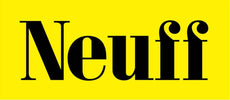
Recovery and Therapy in Athletics
BY BEN HAWKES
Recovery can be a difficult part of athletics for a lot of people. There are many facets to consider with sleep, nutrition, load management, physiotherapy, massage, and mobility work.
A lot of these things are misunderstood, though. The reality is that nailing your sleep, nutrition, and load management are going to carry far, far, far more weight in terms of performance gain than any stretching, massage or rolling.
More detailed guides on nutrition and sleep for athletes can be found in the following videos...
NUTRITION INTAKE FOR ATHLETES
HYDRATION TIPS FOR ATHLETES
SLEEP AND THE ATHLETE
PERFECTING YOUR SLEEP FOR ATHLETIC PERFORMANCE
But for now, we’re going to focus on load management and the role therapy can play for athletes looking to get more from their bodies.
LOAD MANAGEMENT FOR ATHLETES

As we spoke about in the training planning blog a few weeks ago, when we train, our bodies experience something called the general adaptation syndrome, or GAS.
Load management directly influences the way we experience this curve. The size of the stimulus (fatigue induced by training, in combination with other life stressors) determines the size of the drop below baseline, whilst all factors mentioned above - plus how long we allow ourselves to recover between sessions - determine how quickly we get back above that baseline. This is the essence of load management.
Different athletes will respond differently to changes in these variables, so it’s important to encourage journaling and note-taking for both yourself as a coach and your athletes. Moreover, the rate and scale of the fatigue we create will vary throughout the year.

One other thing to be cautious of when we look at load management is avoiding spikes in workload. Some great research from Tim Gabbett & co. has pushed this idea of ‘acute:chronic workload ratios’ (ACWR) into the mainstream. However, it has recently come under criticism from Impellizeri et al. (2020).
For me, the key to ACWR is to see it for what it is, not for what it might be proclaimed to be - or indeed, what it has been discredited for not being. It won’t be a one-and-done injury prediction mega-tool, but it can give you a better, more substantiated idea of how fatigued an athlete may be. This article from Brennan Mickleson outlines the concept more broadly and provides some practically applicable examples of good practice when using ACWR. A good read.
THERAPY TRAINING FOR ATHLETES

Then we come to therapy. This part of performance support is so easily messed up due to a lack of confidence on a lot of coaches’ part - and through no fault of their own, I might add.
My idea of a sort of ‘gold standard’ of physio-, massage-, or any other kind of therapy in sport is where a therapist is embedded within a training group or system. This doesn’t mean a full-time therapist; far from it. What it means is that for the therapy to be most effective, the coach should understand:
- What therapy the athlete actually needs
- The outcomes of the therapy session and how that affects training
- How exercise (p)rehabilitation or mindfulness strategies can be integrated into training
- How coach and therapist can work collaboratively to avoid confusion & frustration whilst maximising treatment efficacy
Clearly, this doesn’t apply to really serious injuries like a leg break or concussion, or for illness like clinical depression, but for maintenance treatment - or even non-catastrophic yet non-trivial injuries - I really believe that a collaborative effort will be most effective for the athlete.
This is best achieved by coaches going away and actually learning the basics of sports science, strength & conditioning, injury rehabilitation and manual therapy. Of course, this is a big ask for volunteer coaches, but the benefits are endless.

Coaches can also encourage this by asking to be sent a treatment report from the therapist, rather than athletes relaying information. You can do this by speaking directly with therapists and athletes (both together and separately), or even having a therapist come to training once every so often to check-in and make sure things are running smoothly.
Having someone actually questioning the rationale behind the training as well can be a powerful tool for coach development, on top of ensuring the best service is provided to athletes.
ALTIS’ “Performance Therapy: A Brief Introduction” is a great place to start for more on this.
And as for massage guns, I’m all for athletes using them if they feel a benefit - but it’s no replacement for an extra hour of sleep or a session with a skilled physiotherapist.


Leave a comment